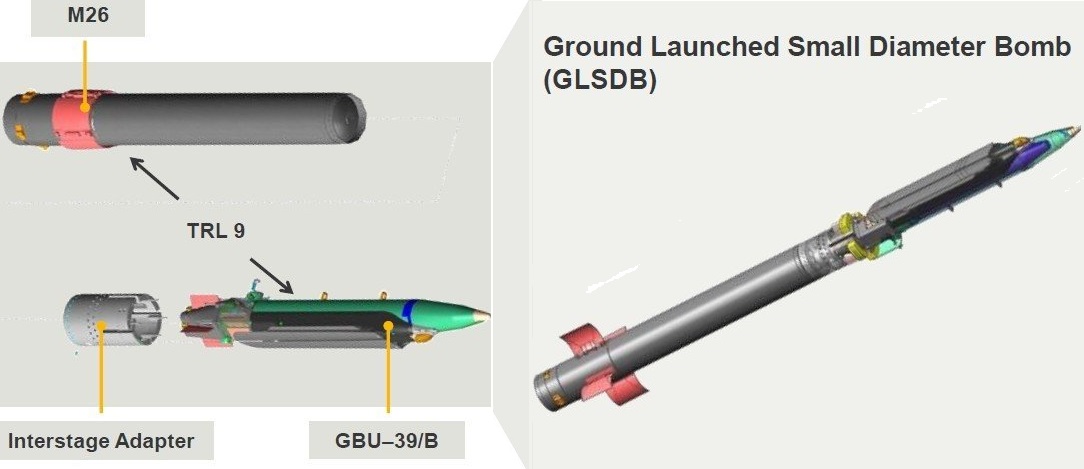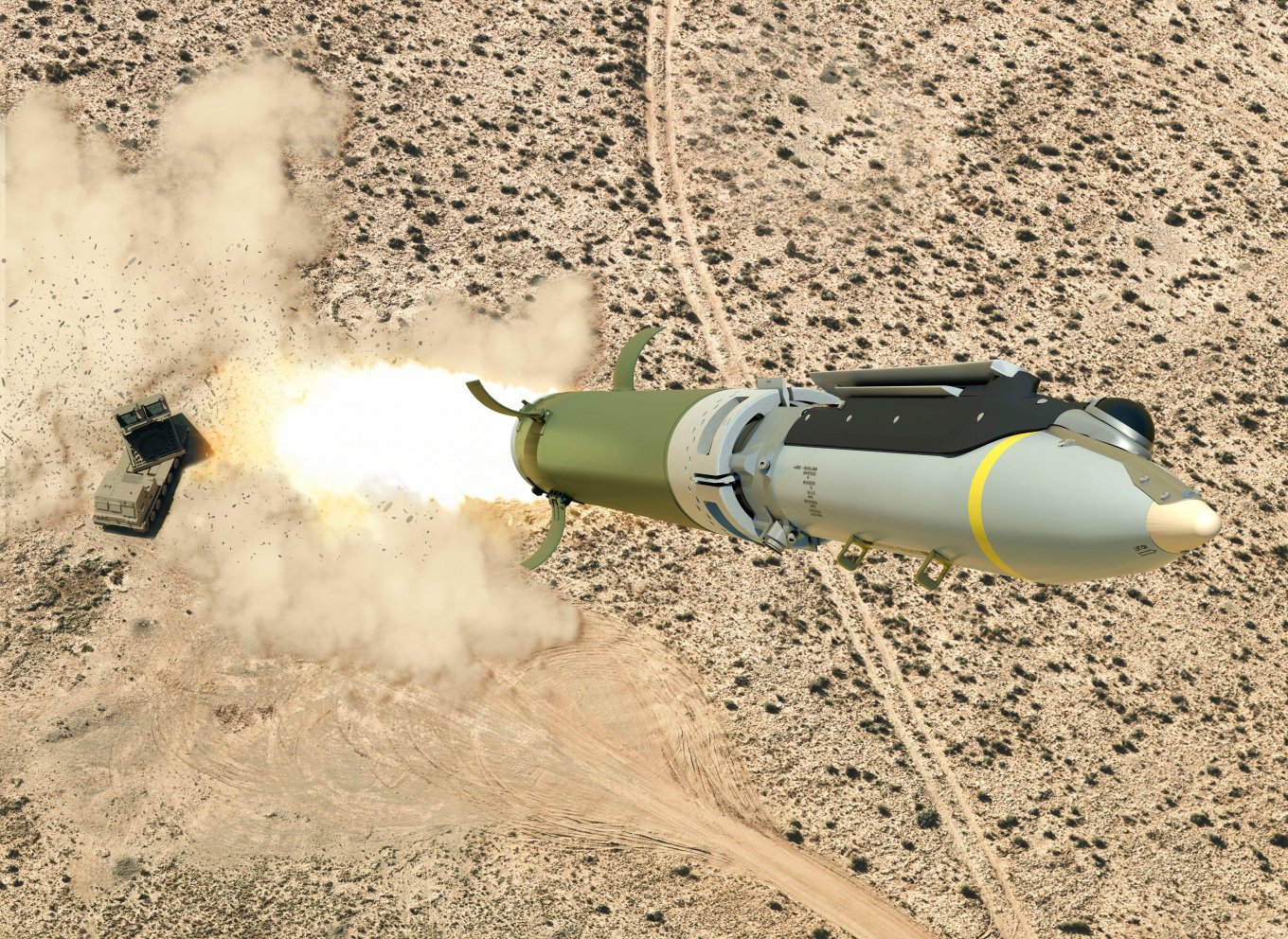The United States is preparing to send to Ukraine a new batch of long-range weapons GLSDB (Ground-Launched Small Diameter Bomb) for the M142 HIMARS and M270 MLRS missile systems. Recall that this is a combination of a jet engine from an M26 unguided rocket and a GBU-39/B SDB I glide high-precision bomb with a maximum range of 150 km.
About the successful work on GLSDB writes Reuters based on its own sources. Noting that it was possible to eliminate the main drawback that made this weapon ineffective – the vulnerability of the satellite navigation system to electronic warfare. In addition, the internal elements of the ammunition were strengthened to increase its stability. The latter obviously indicates changes in the design of a special adapter between the engine and the bomb, with which there seemed to be problems as well.

And in recent weeks, 19 GLSDBs have been shot, which have proven their combat capability. And the batch of these ammunition is already in Europe, which means the possibility of their transfer very soon.
On the part of News Hub, we remind you that the GLSDB itself became an example when expectations from weapons exceeded their real effect on the battlefield by orders of magnitude. Especially considering that their transfer to Ukraine was announced back in February 2023 as part of a $2.175 billion aid package. At that time, GLSDBs were ordered under the USAI program, when weapons are ordered from manufacturers.
And they came to Ukraine somewhere in early 2024, that is, a year later. In particular, the Russians showed the first fragments of the GBU-39/B Small Diameter Bomb in mid-February. And already in April, US Deputy Secretary of Defense Bill LaPlante, although not directly naming the name of the weapon itself, pointed to the GLSDB as an example of a weapon that failed on a real battlefield.

But the obvious failure to fulfill the contract for Boeing and Saab, which jointly created GLSDB, especially due to the fact that their development turned out to be ineffective, is unacceptable and led to additional work. In the end, it is not only a matter of fulfilling the current order, but also of potential contracts, moreover, of reputation.
In the end, the question now remains what exactly has been changed in the GBU-39/B SDB guidance system, because the installation of a new jam-resistant satellite navigation is only one of the options. And it must be understood that the principle of using GLSDB with a rise to a considerable height means that it is under the influence of electronic warfare for quite a considerable time. This, by the way, is the answer to the question of why GLSDB critically suffers from electronic warfare, and SDB from aircraft – less.
Another option is to revise the concept of using the system and use an SDB with a semi-active laser guidance system. The latter requires illumination of the target with a laser, for example, from a UAV, but it definitely does not choke with electronic warfare and allows you to hit moving targets. At the same time, it should be understood that the entire effectiveness of the SDB, which weighs a total of 129 kg, depends on the accuracy of the hit, which should be several meters.

